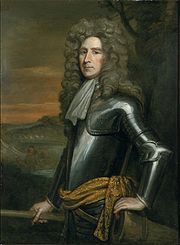
The Glorious Revolution is the name given to the events that led to the deposition of James II and VII in November 1688. He was replaced by his daughter Mary II and her Dutch husband, William III of Orange, who was also his nephew. The two ruled as joint monarchs of England, Scotland and Ireland until Mary's death in 1694. The Revolution itself was relatively bloodless, but pro-Stuart revolts between 1689 and 1746 caused significant casualties, while the political movement known as Jacobitism persisted into the late 18th century. William's invasion was the last successful invasion of England.
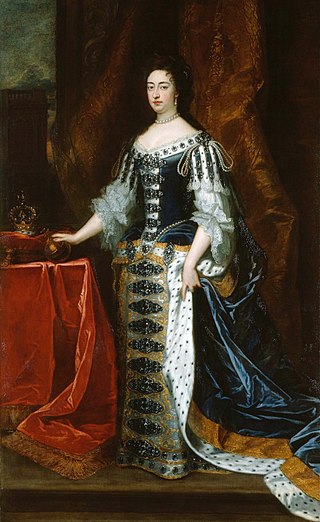
Mary II was Queen of England, Scotland, and Ireland, co-reigning with her husband, William III and II, from 1689 until her death in 1694. She was also Princess of Orange following her marriage on 4 November 1677. Her joint reign with William over Britain is known as that of William and Mary.

William III, also widely known as William of Orange, was the sovereign Prince of Orange from birth, Stadtholder of Holland, Zeeland, Utrecht, Guelders, and Overijssel in the Dutch Republic from the 1670s, and King of England, Ireland, and Scotland from 1689 until his death in 1702. As King of Scotland, he is known as William II. He ruled Britain and Ireland alongside his wife, Queen Mary II, and their joint reign is known as that of William and Mary.

William Cavendish, 1st Duke of Devonshire, was an English Army officer, Whig politician and peer who sat in the House of Commons from 1661 until 1684 when he inherited his father's peerage as Earl of Devonshire and took his seat in the House of Lords. Cavendish was part of the "Immortal Seven" which invited William of Orange to depose James II of England as part of the Glorious Revolution, and was rewarded for his efforts by being elevated to the Duke of Devonshire in 1694.

Robert Spencer, 2nd Earl of Sunderland, was an English nobleman and politician of the Spencer family. An able and gifted statesman, his caustic temper and belief in absolute monarchy nevertheless made him numerous enemies. He was forced to flee England in 1688, but later established himself with the new regime after the Glorious Revolution of that year. Subsequently, he took on a more disinterested role as an adviser to the Crown, seeking neither office nor favour. He evinced no party loyalty, but was devoted to his country's interests, as he saw them. By the notoriously lax standards of the Restoration Court, his private life was remarkably free from scandal, which won him favour in the more sober post-Revolution state.

Thomas Osborne, 1st Duke of Leeds, was an English Tory politician and peer. During the reign of Charles II of England, he was the leading figure in the English government for roughly five years in the mid-1670s. Osborne fell out of favour due to corruption and other scandals. He was impeached and eventually imprisoned in the Tower of London for five years until James II of England acceded in 1685. In 1688, he was one of the Immortal Seven who invited William of Orange to depose James II during the Glorious Revolution. Osborne was again the leading figure in England's government for a few years in the early 1690s before dying in 1712.
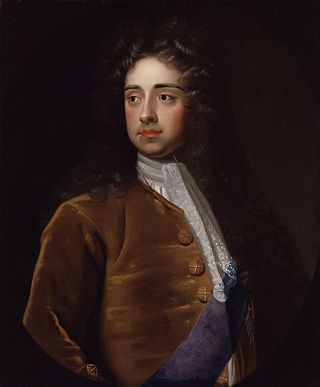
Charles Talbot, 1st Duke of Shrewsbury was an English peer and Whig politician who was part of the Immortal Seven group which invited William of Orange to depose King James II of England during the Glorious Revolution. He was appointed to several minor roles before the revolution, but came to prominence as a member of William's government. Born to Roman Catholic parents, he remained in that faith until 1679 when—during the time of the Popish Plot and following the advice of the divine John Tillotson—he converted to the Church of England. Shrewsbury took his seat in the House of Lords in 1680 and three years later was appointed Gentleman-Extraordinary of the Bedchamber, suggesting he was in favour at the court of Charles II.
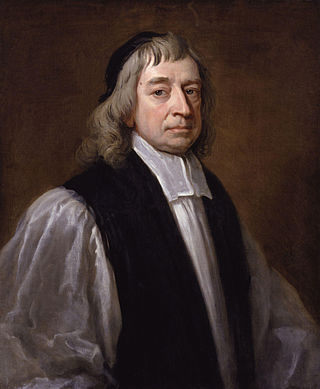
Henry Compton was an English Army officer and Anglican clergyman who served as the Bishop of London from 1675 to 1713.
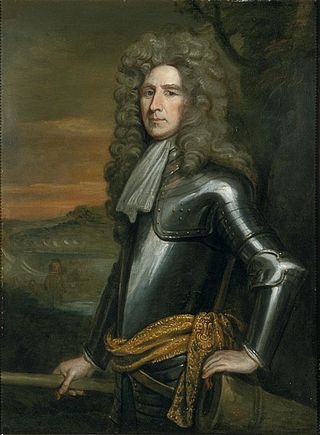
Henry Sydney, 1st Earl of Romney was an English Army officer, Whig politician and peer who served as Master-General of the Ordnance from 1693 to 1702. He is best known as one of the Immortal Seven, a group of seven Englishmen who drafted an invitation to William of Orange, which led to the November 1688 Glorious Revolution and subsequent deposition of James II of England.

Admiral Arthur Herbert, 1st Earl of Torrington was a Royal Navy officer, peer and politician. Dismissed by King James II of England in 1688 for refusing to vote to repeal the Test Act, which prevented Roman Catholics from holding public office, he brought the Invitation to William to William of Orange at The Hague, disguised as a simple sailor. As a reward he was made commander of William's invasion fleet which landed at Torbay in Devon on 5 November 1688, which initiated the Glorious Revolution.

Richard Lumley, 1st Earl of Scarbrough was an English Army officer, Whig politician and peer best known for his role in the Glorious Revolution.
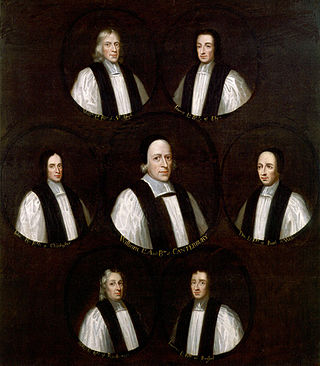
The Seven Bishops were members of the Church of England tried and acquitted for seditious libel in the Court of Kings Bench in June 1688. The very unpopular prosecution and the acquittal of the bishops is viewed as a significant element in the events that led to the November 1688 Glorious Revolution and deposition of James II.

William Bentinck, 1st Earl of Portland, was a Dutch-born English nobleman who became in an early stage the favourite of William, Prince of Orange, Stadtholder in the Netherlands, and future King of England. He was reportedly steady, sensible, modest and usually moderate. The friendship and cooperation stopped in 1699.

James VII and II was King of England and Ireland as James II and King of Scotland as James VII from the death of his elder brother, Charles II, on 6 February 1685. He was deposed in the Glorious Revolution of 1688. He was the last Catholic monarch of England, Scotland and Ireland. His reign is now remembered primarily for conflicts over religious tolerance, but it also involved struggles over the principles of absolutism and the divine right of kings. His deposition ended a century of political and civil strife in England by confirming the primacy of the English Parliament over the Crown.
Events from the year 1688 in England. This was the year of the Glorious Revolution that overthrew King James II.

James Bertie, 1st Earl of Abingdon, styled Hon. James Bertie until 1657 and known as the 5th Baron Norreys from 1657 until 1682, was an English nobleman.
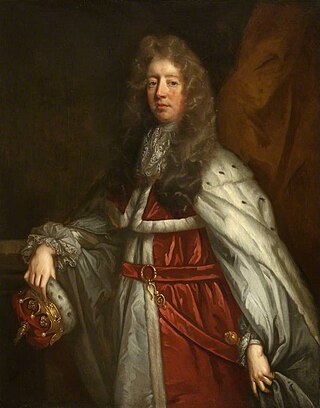
Colin Lindsay, 3rd Earl of Balcarres (1652–1722) was a Scottish aristocrat and politician, and one of the most important supporters of James VII of Scotland& II of England and Ireland in Scotland.
William Hendrik of Nassau, Lord of Zuylestein, 1st Earl of Rochford was a Dutch soldier and diplomat in the service of his cousin William III of England. During the reign of James II of England he travelled to England to liaise with William's English supporters, and played an important part in the preparations of the Glorious Revolution.
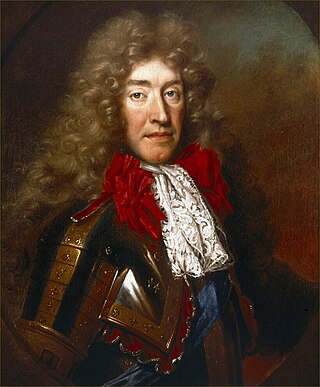
The Glorious Revolution in Scotland refers to the Scottish element of the 1688 Glorious Revolution, in which James VII was replaced by his daughter Mary II and her husband William II as joint monarchs of Scotland and England. Prior to 1707, the two kingdoms shared a common monarch but were separate legal entities, so decisions in one did not bind the other. In both countries, the Revolution confirmed the primacy of Parliament over the Crown, while the Church of Scotland was re-established as a Presbyterian rather than Episcopalian polity.
